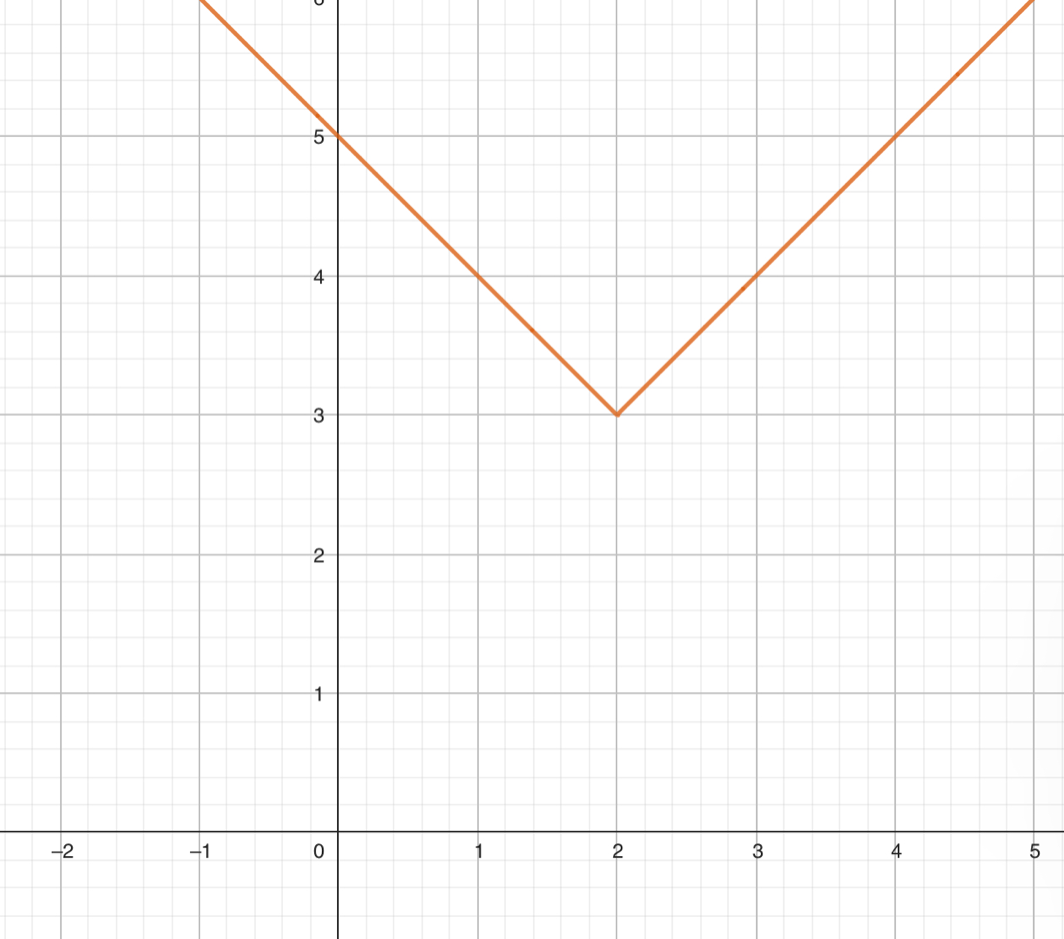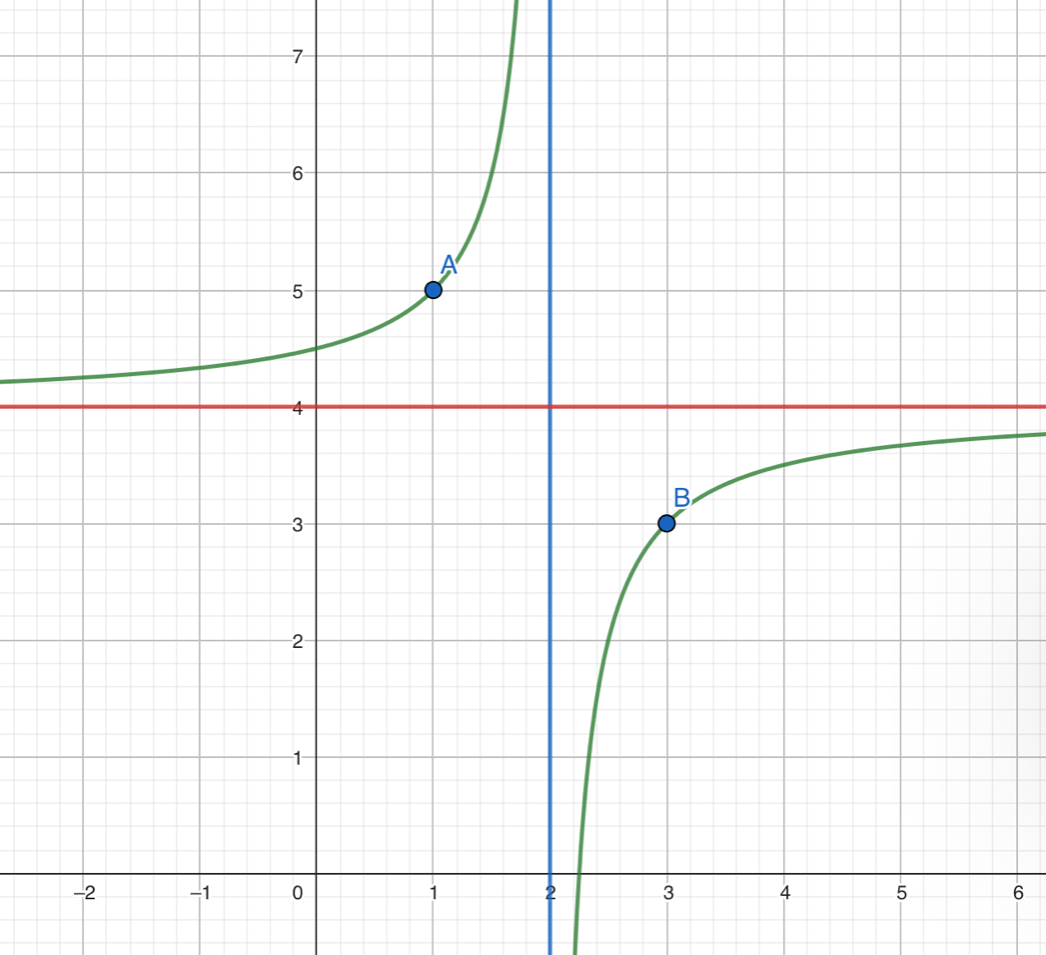What is the value of
i^2
-1
What is the parent function of rational functions?
F(x)=1/x
Add the rational expressions and simplify your answer:
5/7 + 2/5
39/35 or 1 4/35
Excluded values of a rational expression will make the value of the denominator equal to _____.
0
To solve a rational equation, you have to multiply both sides of the equation by the _________.
Common denominator
What are the possible types of solutions for a linear-quadratic system?
This is the name for a line that a function approaches but never actually touches.
Asymtote
Common denominator
TRUE OR FALSE:
When multiplying or dividing a rational expression, you do not need a common denominator.
TRUE
Multiplying both sides of a rational equation by the common denominator will get rid of the ________ of each expressions, leaving you with a simple algebraic equation.
Denominators
Use synthetic division to solve:
(2x^3+5x^2-x+7) div (x-2)
2x^2+9x+17 r. 41
In the rational function:
F(x)=3(1/(x-1))+2
Identify h, k, a, and b.
h=1
k=2
a=3
b=1
Find the common denominator of the rational expressions:
(2p)/(p+6) and 2/(5p-4)
(5p-4)(p+6)
What strategy can you use to divide rational expressions?
HINT: “Keep it, change it, flip it”
Multiply by the reciprocal
Factor and identify any excluded values:
(x^2-8x) /(14(x^2+8x+15)
-3 and -5
Solve using the quadratic formula:
X^2+27=12x
Where are the vertical and horizontal asymptotes located for the function:
F(x)=1/(2(x-3))-1
X=-3
y=-1
Subtract the rational expression:
4/(v+4) -3/4
(4-3v)/(4(v+4)
Multiply the rational expressions:
1/(n+5) * (9n+45)/(n+5)
9/(n+5)
FREE POINTS!
+400
Hooray!
Write an equation for the graph:

F(x)=abs(x-2)+3
Write the function represented by this graph:

F(x)=-(1/x-2)+4
Add the rational expressions:
4/(3x+3)+3/(3x-6)
(7x-5)/(3(x-2)(x+1))
Divide the rational expressions:
(X-8)/(7X+14) div 1/(X+2)
(X-8)/7
Solve the rational equation:
8/(x+3) = (x+1)/(x+6)
9 and -5